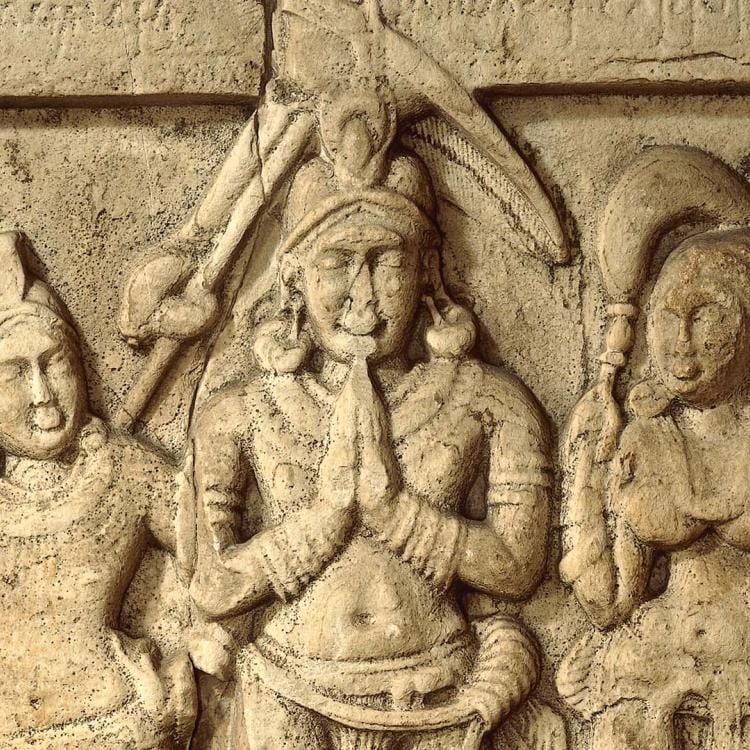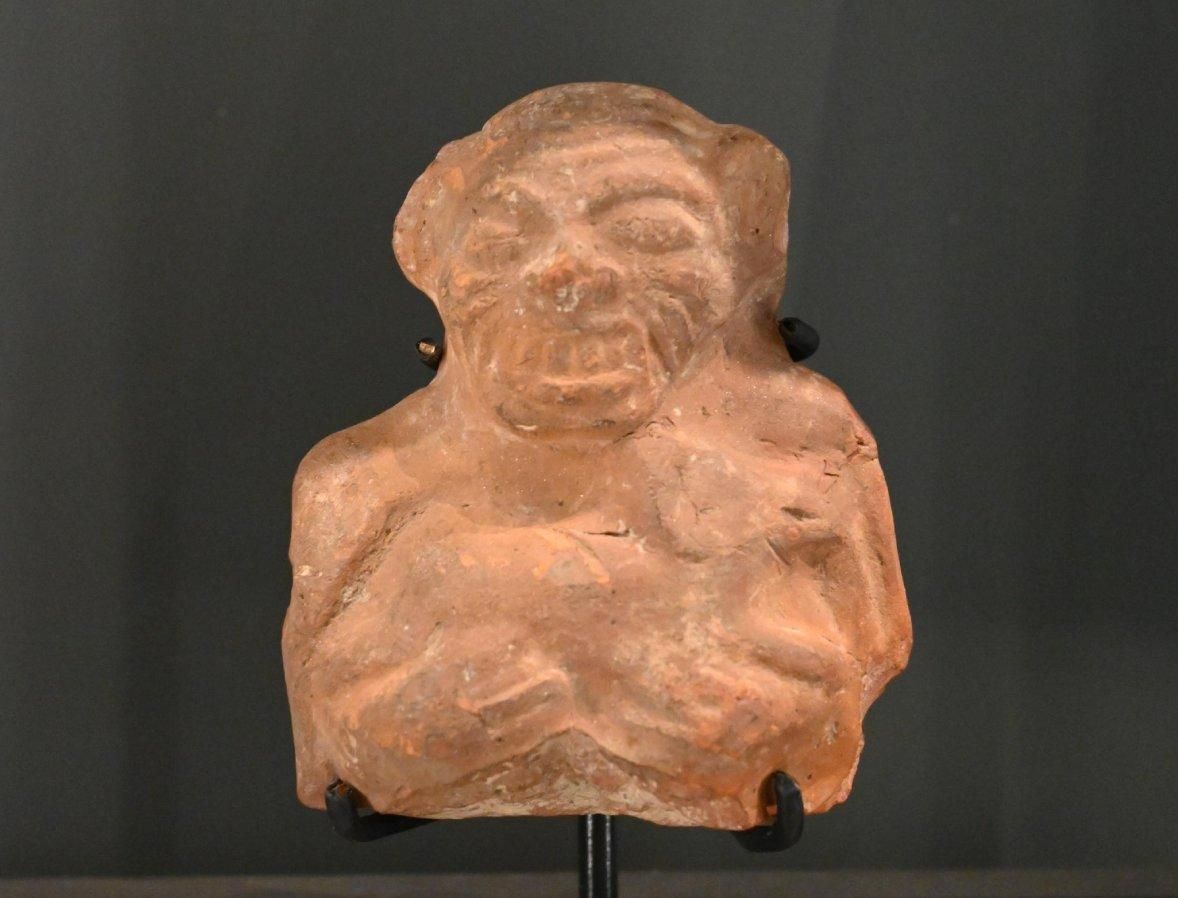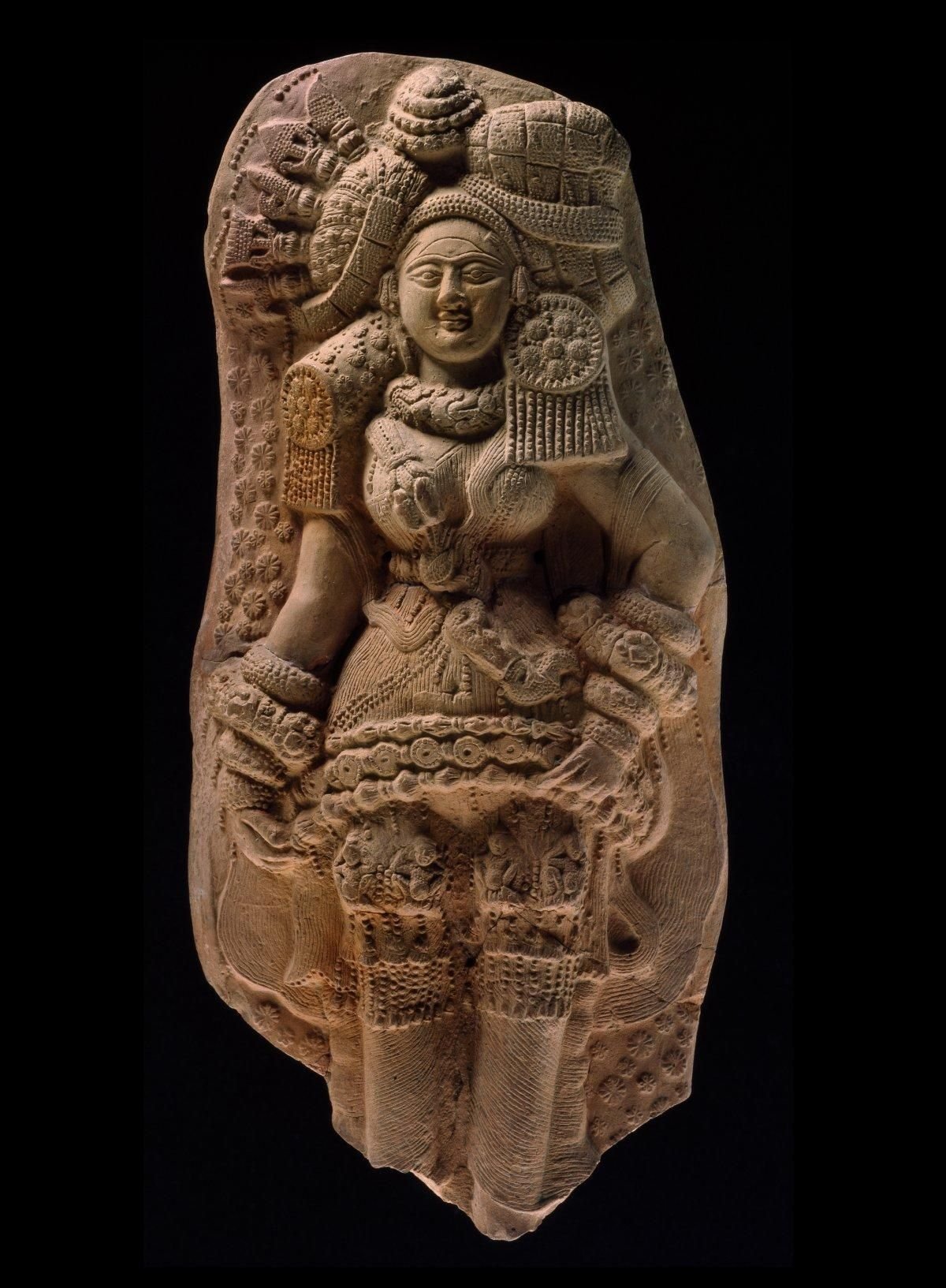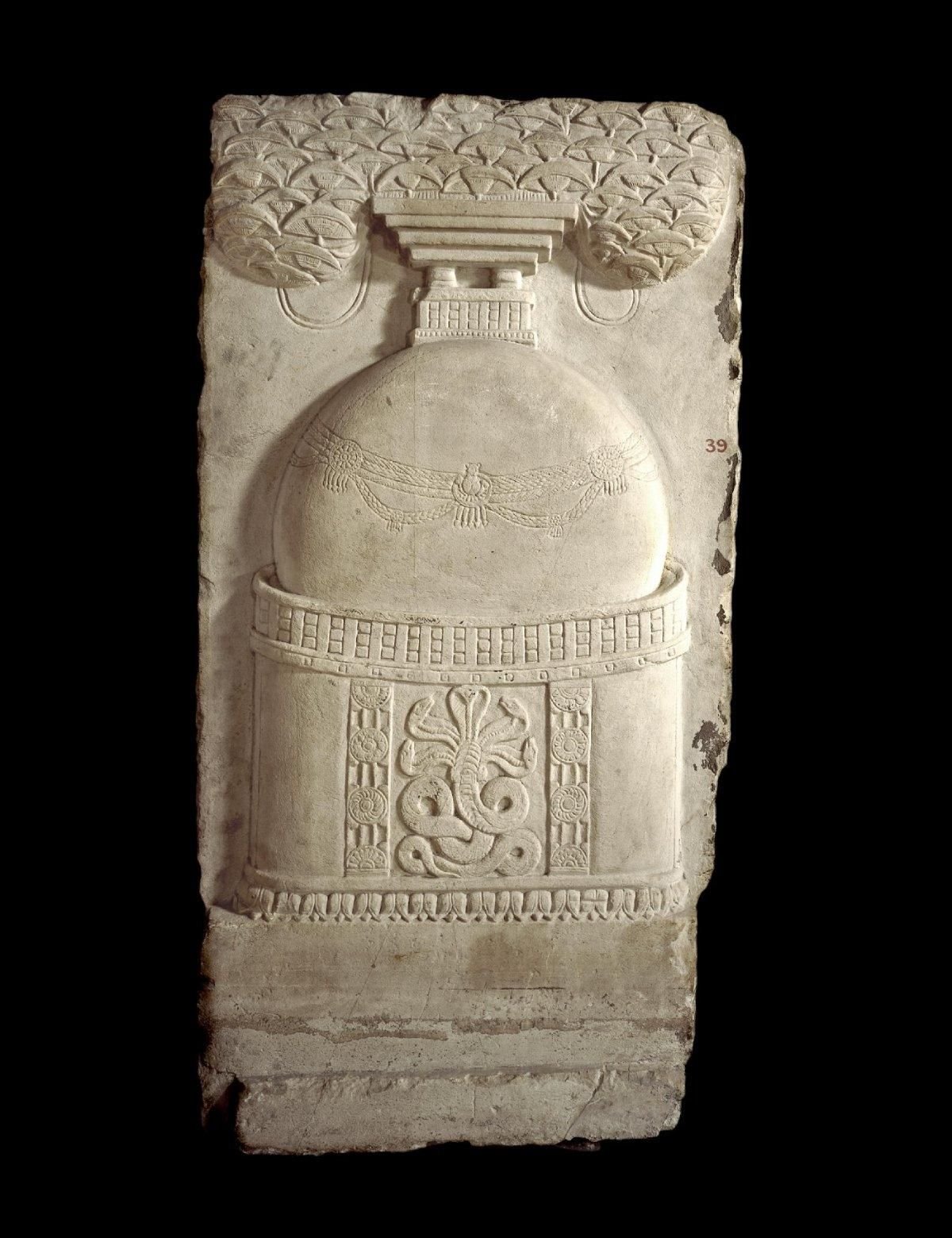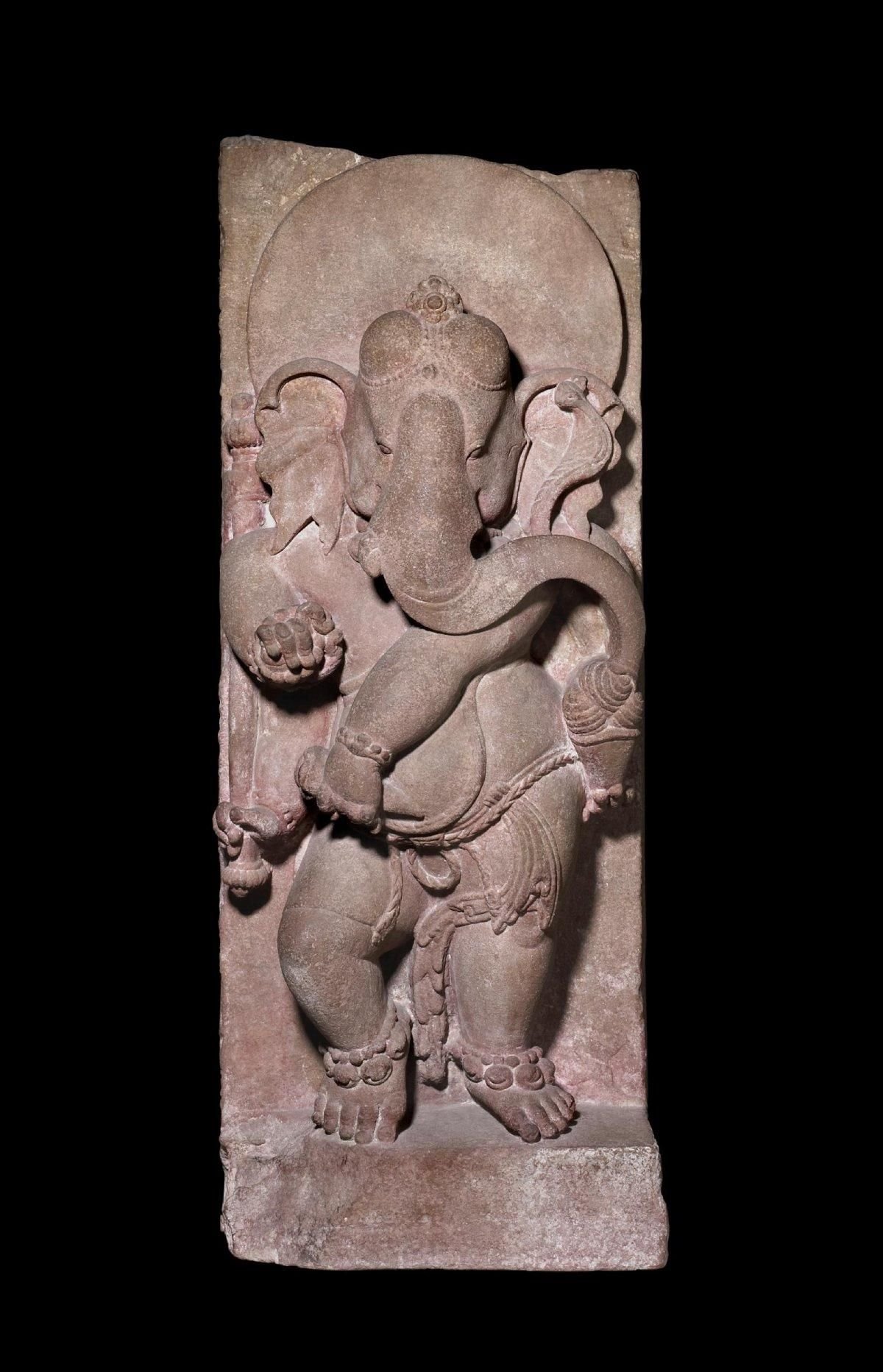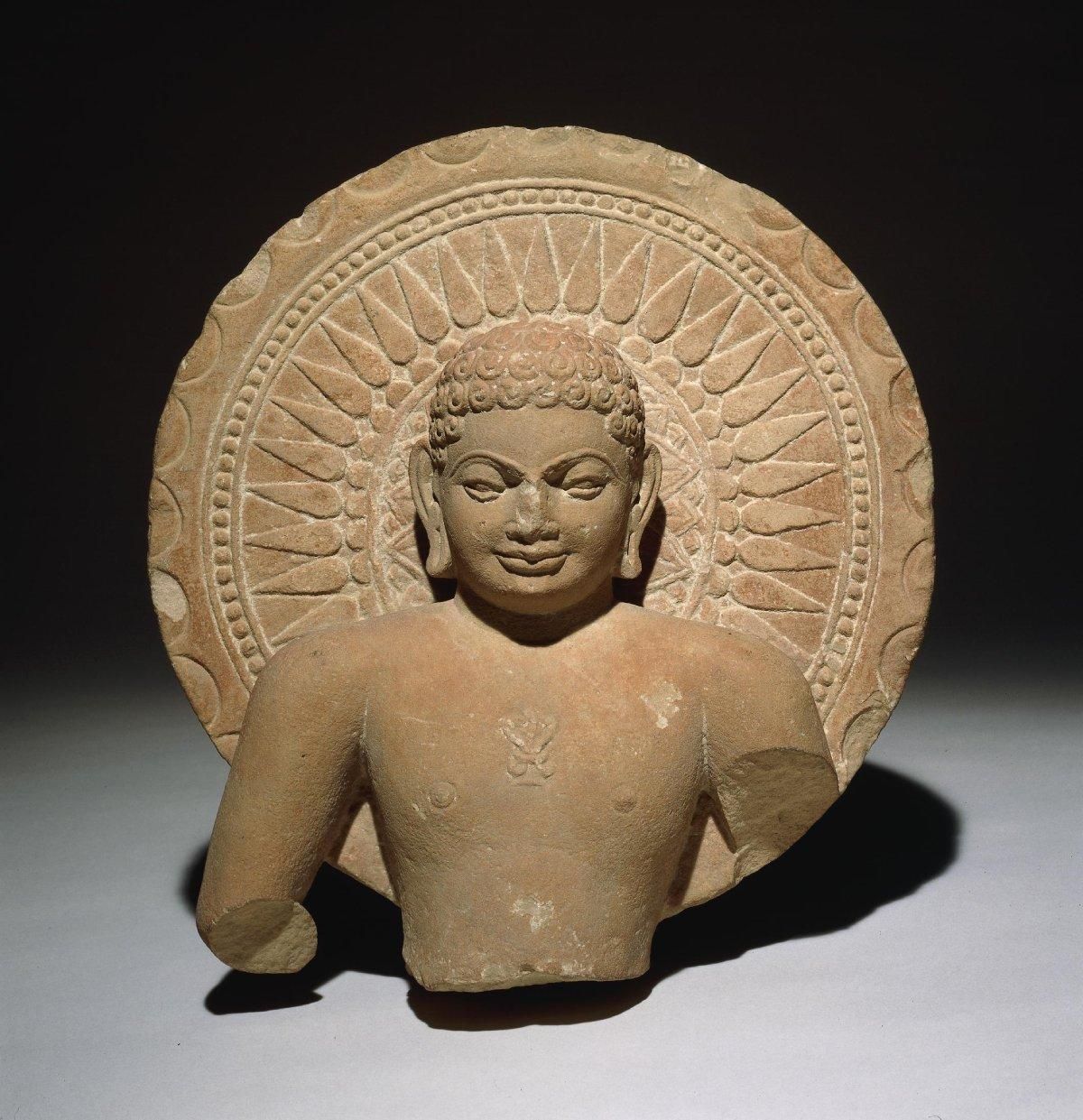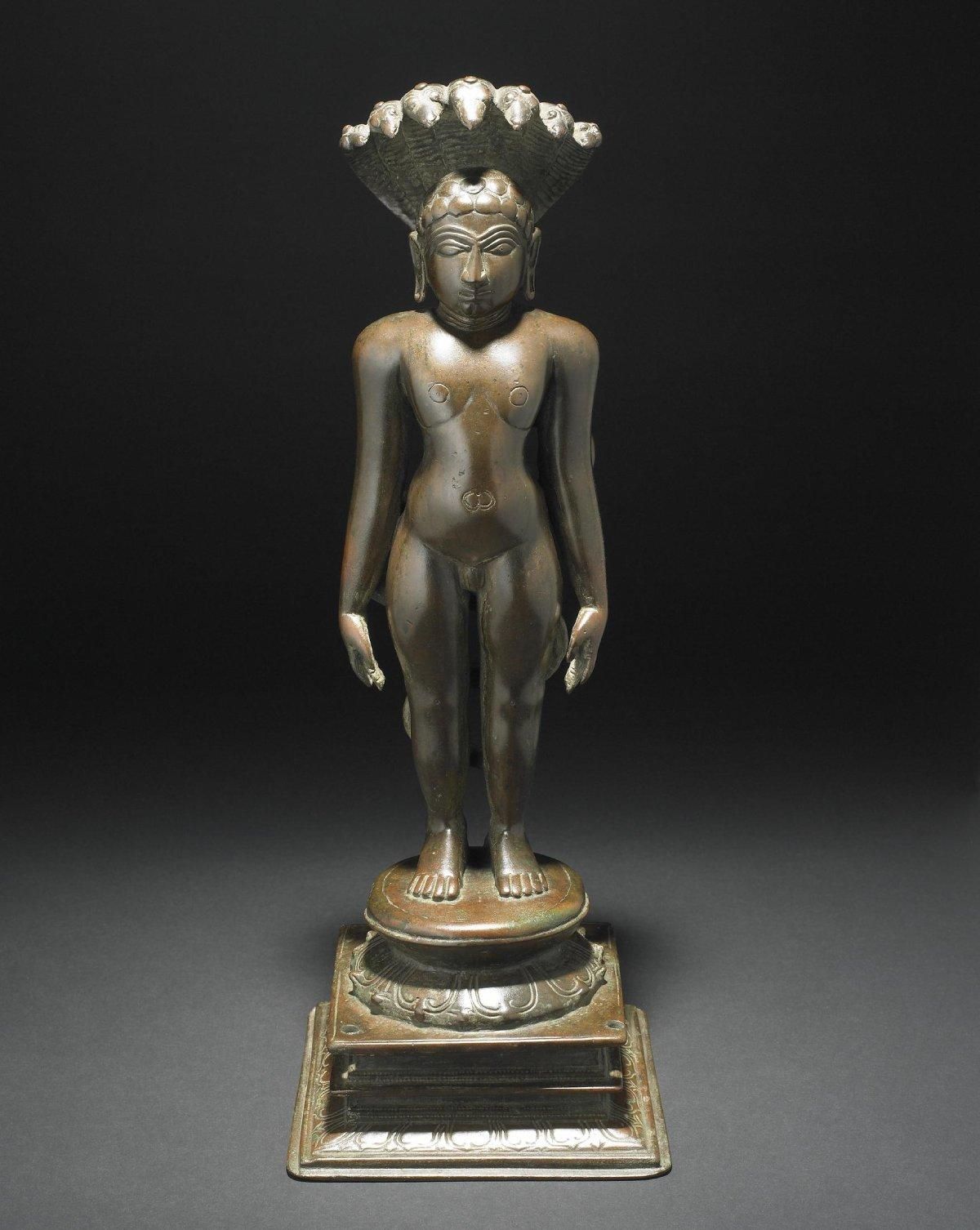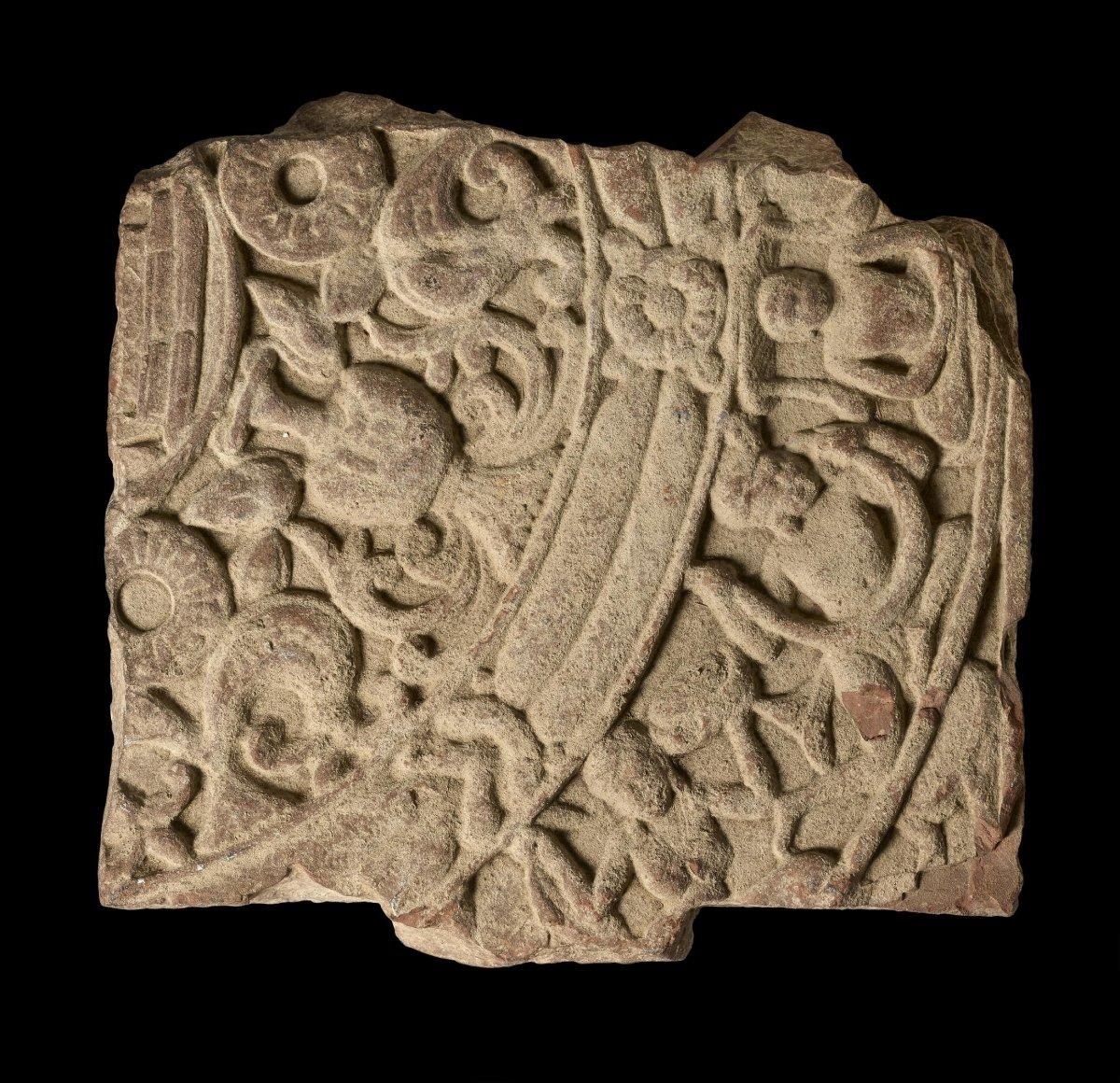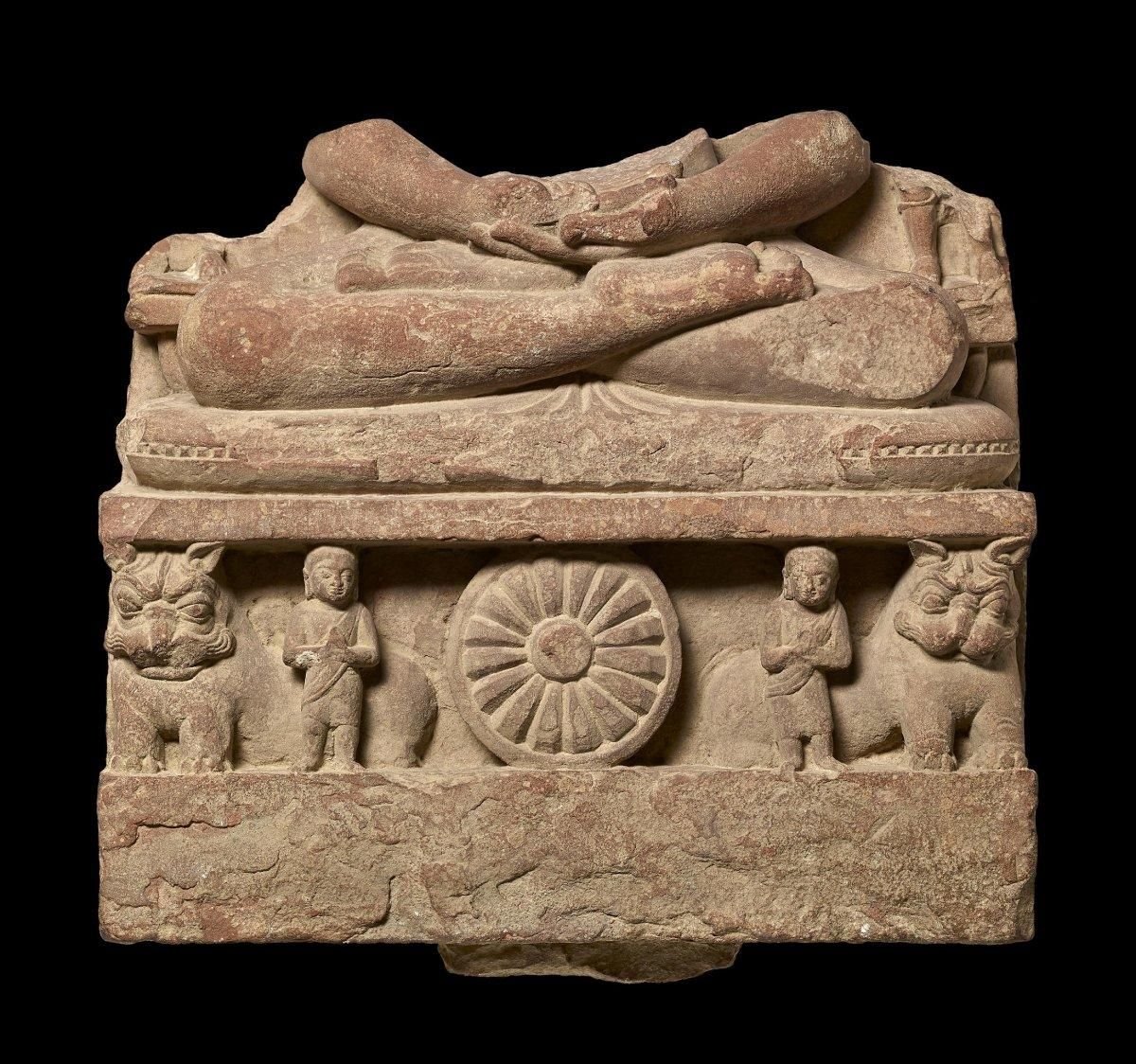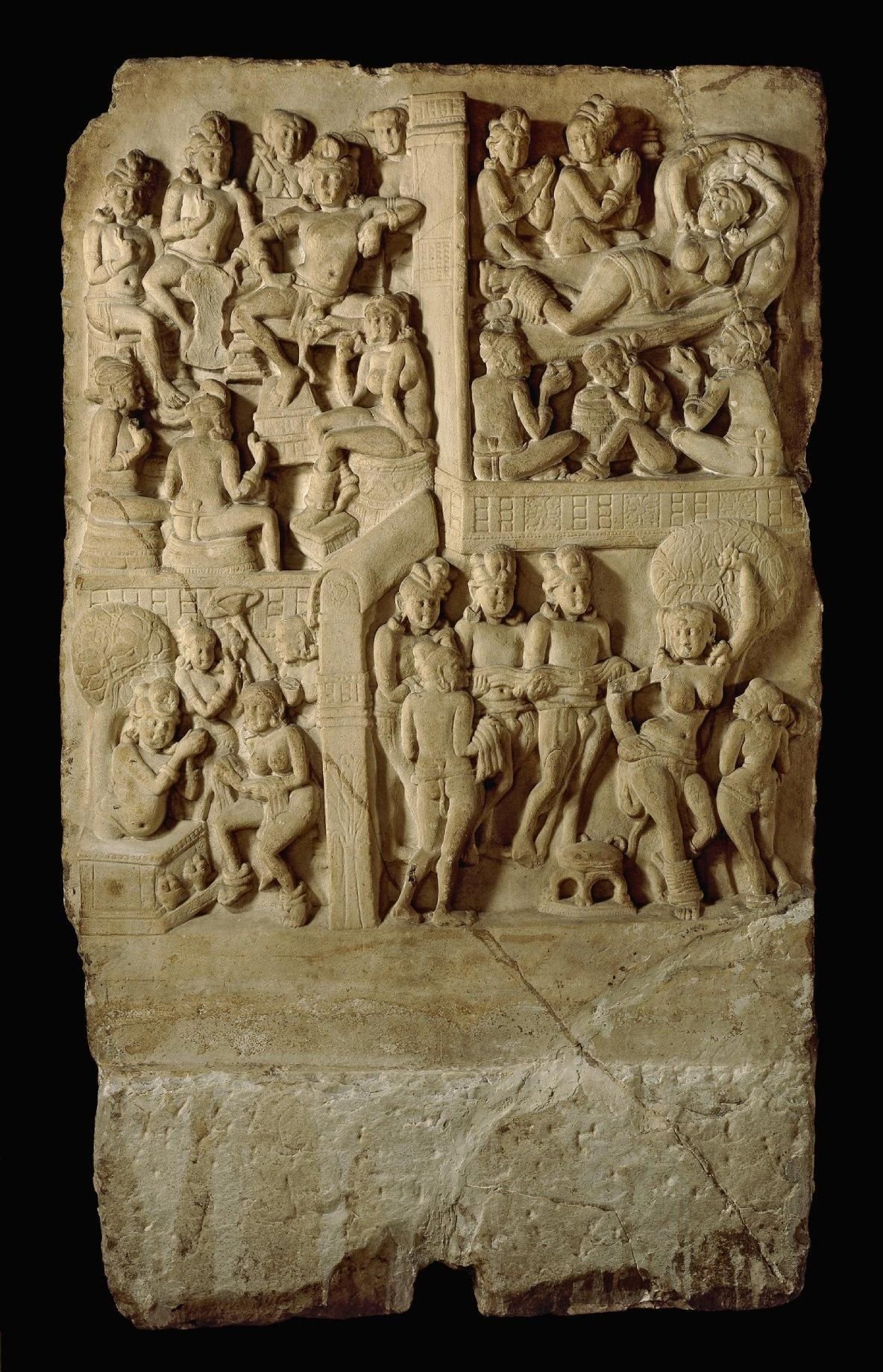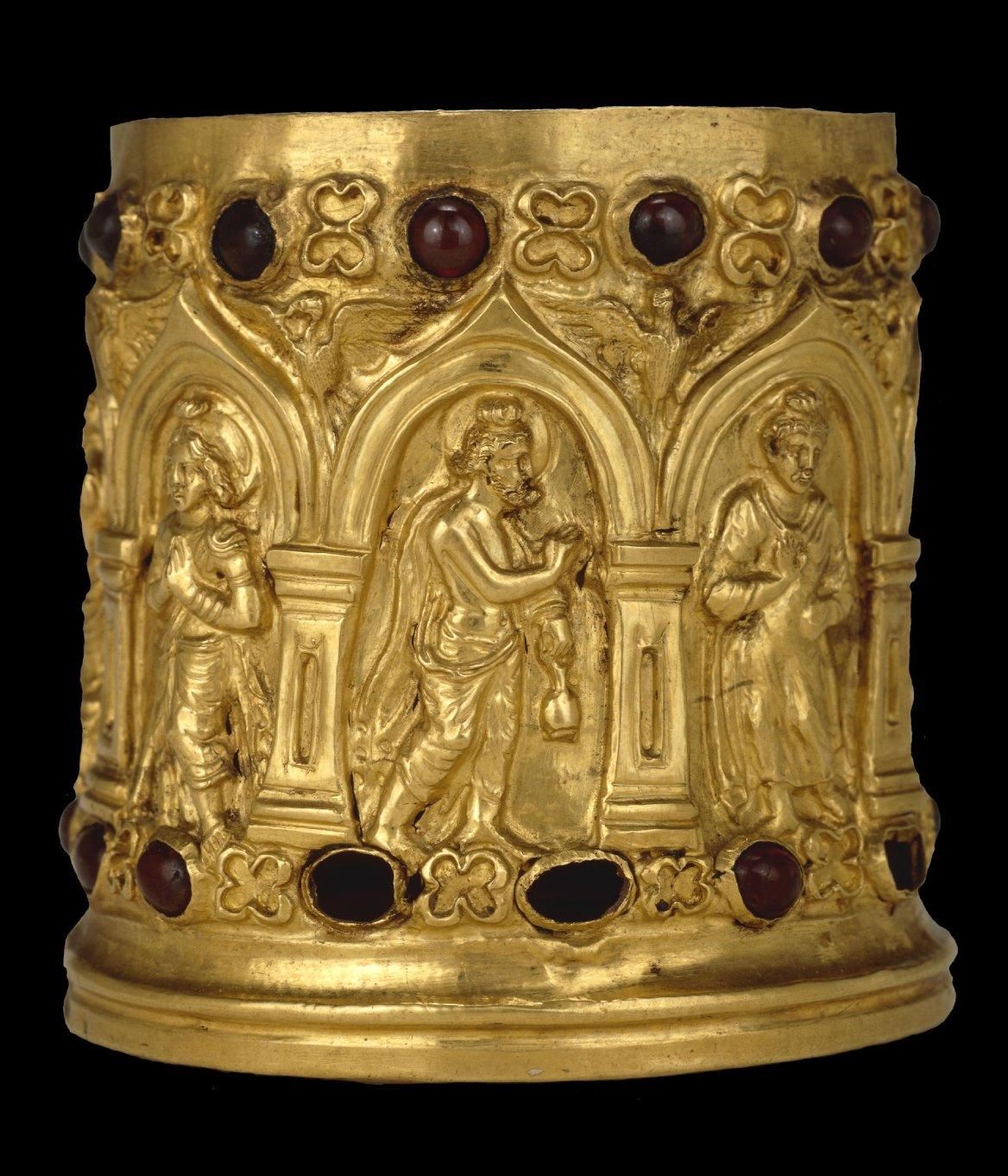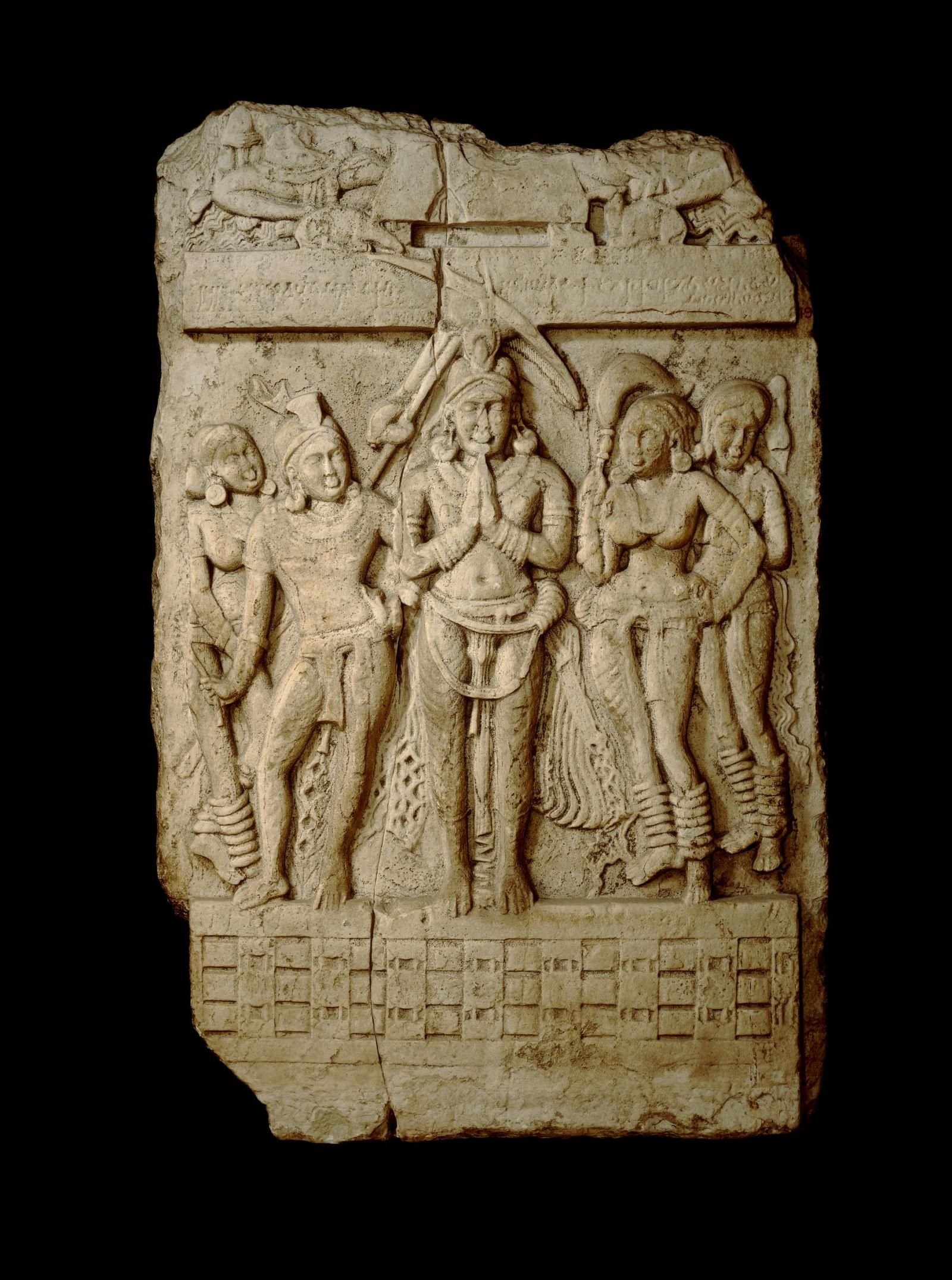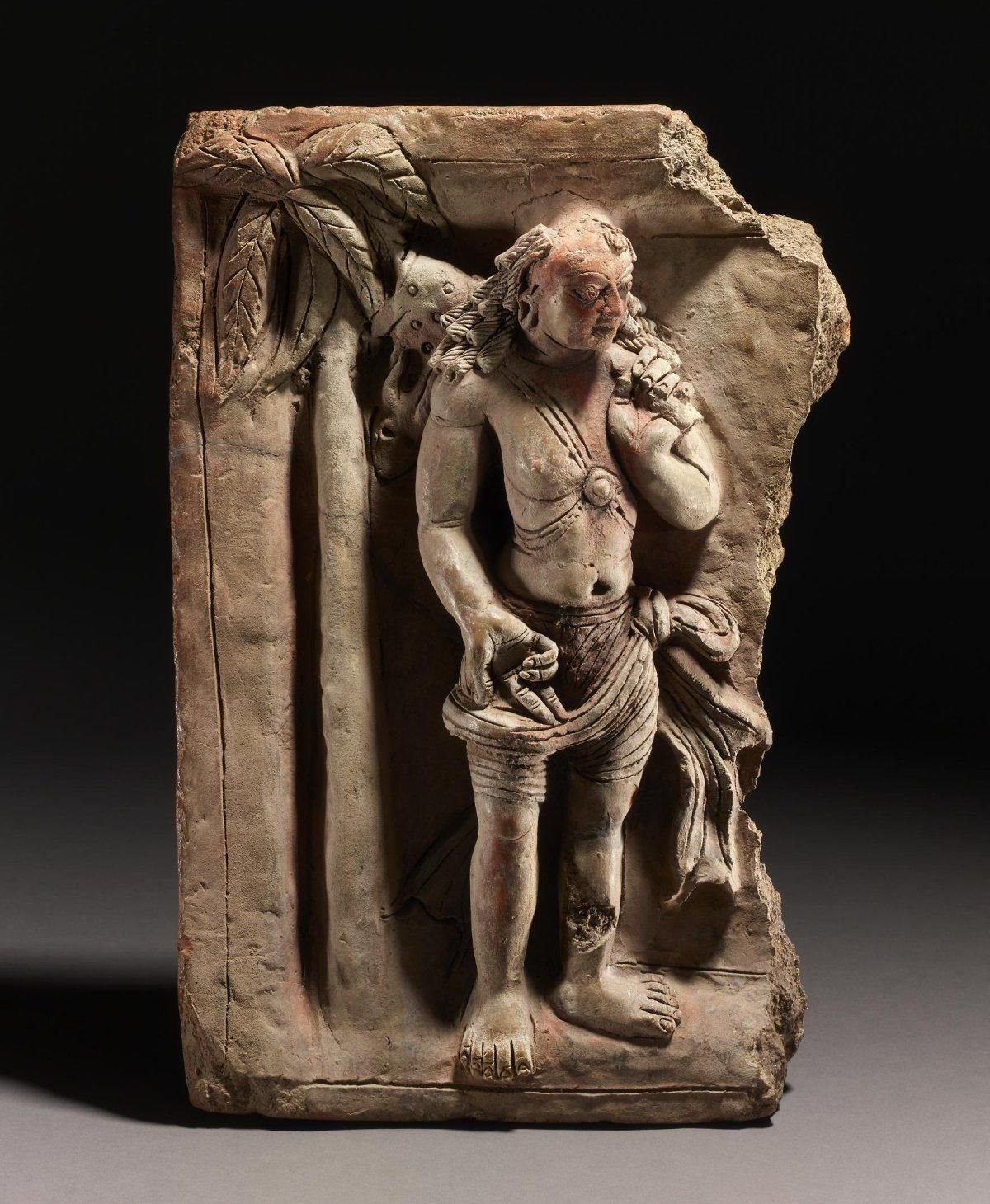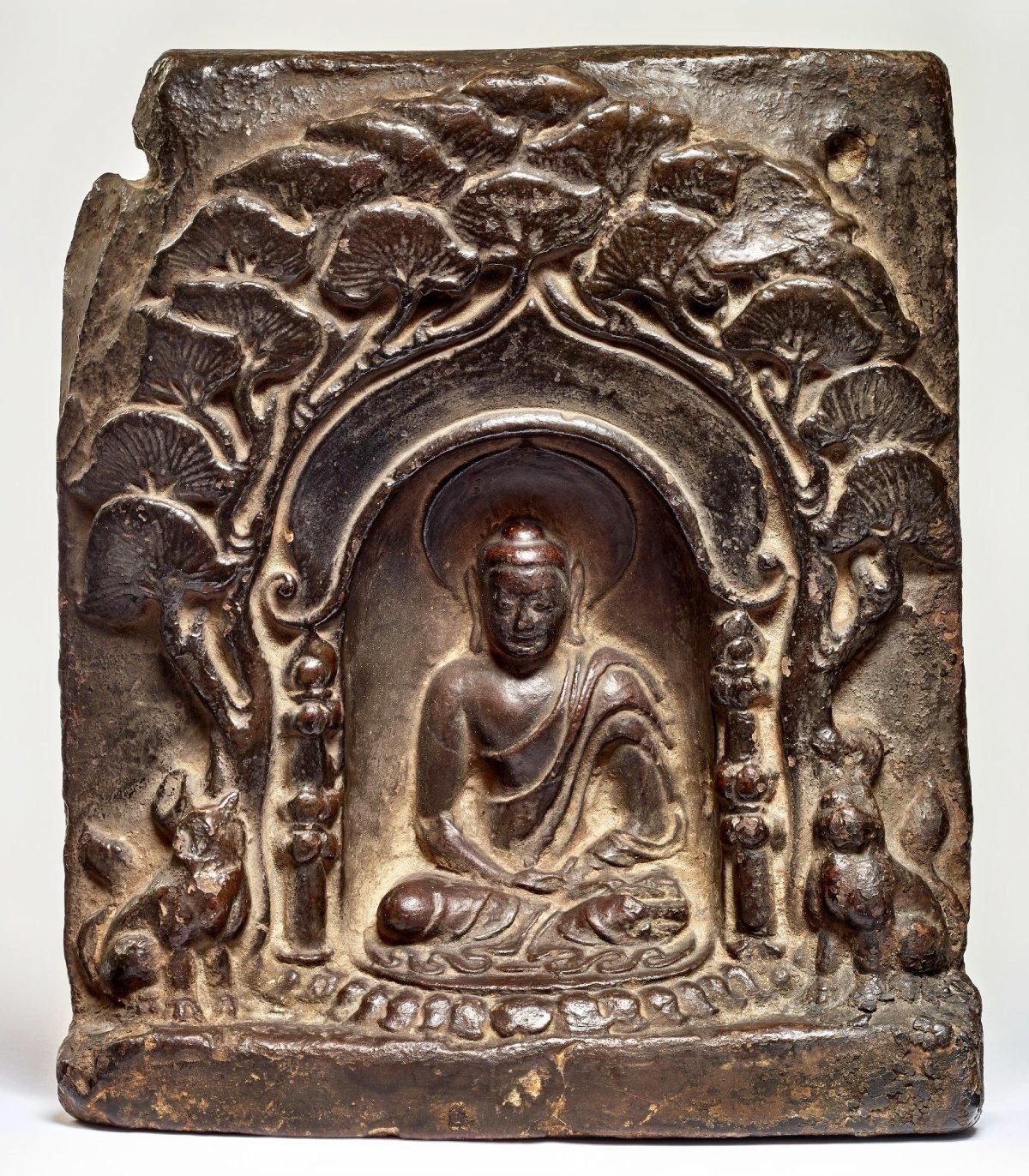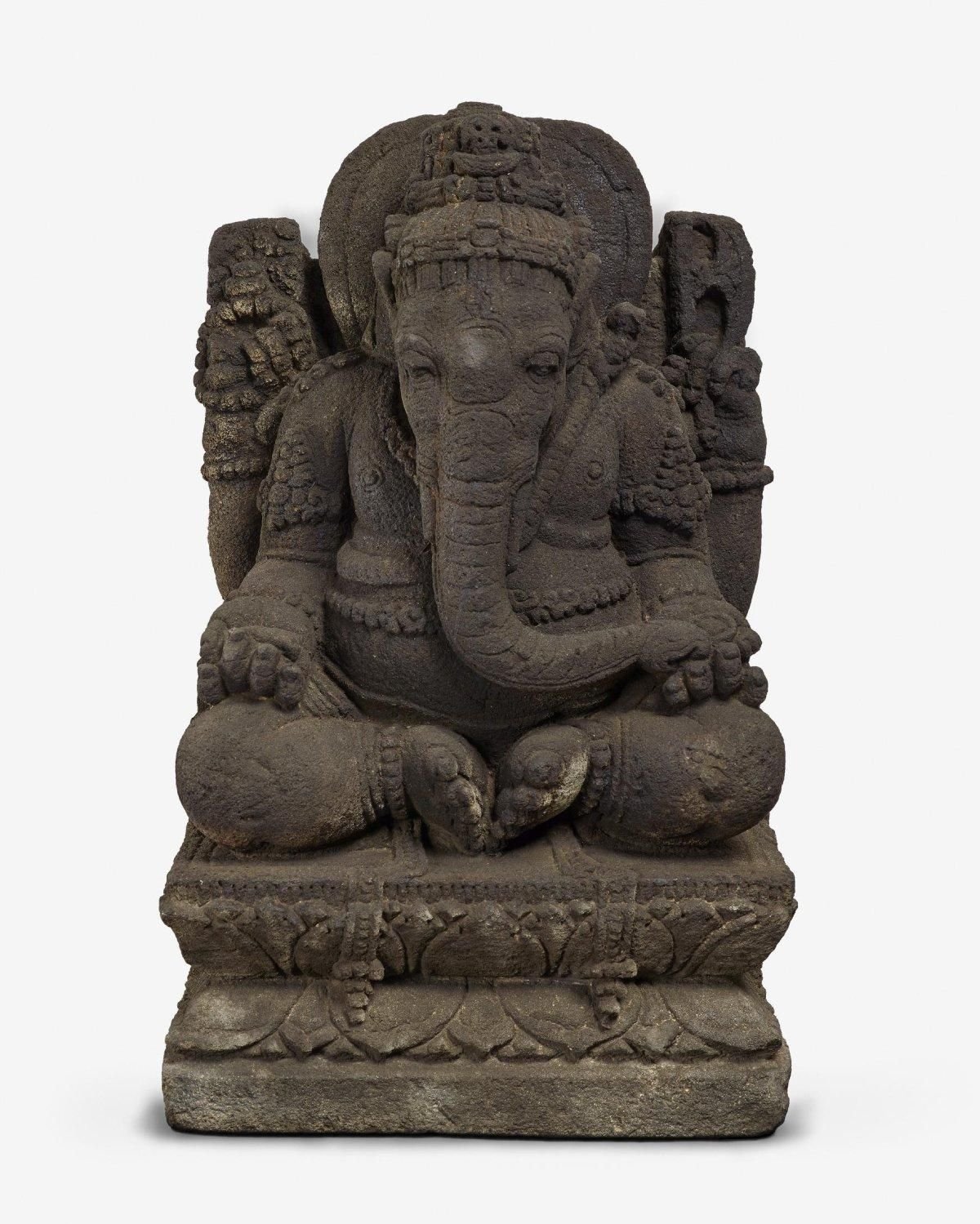See these breathtaking objects in the special exhibition Ancient India: living traditions, opening on 22 May 2025.
Jainism, Buddhism and Hinduism are major world religions with roots in ancient India – join exhibition curator Sushma Jansari in this illuminating dive into the origins of their visual evolution.
Ancient India: living traditions explores the origins of representations of gods and enlightened teachers of Jainism, Buddhism and Hinduism, in the powerful nature spirits and divine serpents of ancient India. The art of these religions share many similarities and it was between about 200 BC and AD 600 that many of the sacred images we recognise today took shape and began to spread to Central Asia, East Asia and Southeast Asia.
Potent nature spirits, divine serpents and animal-headed deities
The exhibition opens in ancient India in about 200 BC. This atmospheric part of the show will envelope you in the intoxicating sights, sounds and scents of nature. At this time, India was covered in dense forests and rich agricultural land, watered by immense rivers and monsoon rains. Most people lived in rural communities and believed powerful nature spirits and sacred snakes inhabited the world around them, influencing their lives and the success or failure of harvests. These spirits were imagined through devotional art shaped in monumental stone sculptures and small terracotta figures.
This hand-shaped terracotta image, dating to about 200–100 BC, shows a yaksha (male nature spirit) with a fierce expression and teeth-baring grin. Such yakshas were believed to be unpredictable and able to make life difficult unless they were placated with offerings. This nature spirit holds an animal, possibly a goat, perhaps representing a sacrificial offering made to him. Thousands of small terracotta figures like this one continue to be unearthed across South Asia, showing their importance to the lives of ancient people. The way these terracotta figures were used is still a mystery. They may have been venerated as deities in household shrines or left as offerings at religious sanctuaries.
Yakshis (female nature spirits) granted abundance and fertility, while also bringing death and disease. They are depicted as full-figured, bejewelled women standing by fruit or blossom-laden trees, sometimes holding children in their arms. But beware – if you look closely, you can see that some yakshis have weapons in their hair!
Powerful serpent deities were believed to control life-giving waters. Able to grant wealth, fertility and protection, they could also kill with a single bite! These are among the most ancient deities to be worshipped in India, usually depicted as rearing, many-headed cobras. They played such an important role in peoples' lives and, like yakshas and yakshis, were believed to be so powerful that they were incorporated into Hinduism, Buddhism and Jainism and their devotional art. This cobra was carved into a first-century AD limestone panel that once embellished a Buddhist monument at Amaravati in Andhra Pradesh.
Some nature spirits were also depicted with human bodies and animal heads. The beloved god Ganesha shares many yaksha features, including his animal-head. And, as with yakshas, his veneration crosses religious and social boundaries – he is one of the most well-known and beloved gods for Hindus as well as some Buddhists and Jains.
Jain art: enlightened teachers, divine attendants and sacred symbols
Jain religious art focuses on representations of the 24 enlightened teachers called tirthankaras. The earliest certain depictions of the tirthankaras in human form were carved in beautiful mottled pink sandstone about 2,000 years ago in the workshops of the ancient city of Mathura in north India. This marked a major innovation in Indian religious art. Ancient sculptures like this one, dating to the third century AD, are still recognisable as tirthankaras today because of the sacred symbol of an endless knot on his chest.
Images of the tirthankaras were inspired by and incorporated features from earlier depictions of nature spirits and divine serpents. Each of the tirthankaras have male and female nature spirit attendants, for example. In Jain stories and works of art, snakes play a protective role. Parshvanatha, the 23rd tirthankara, was deep in meditation when a malevolent being sent torrential rain and a host of spirits to attack him. The serpent Dharanendra protected Parshvanatha with his snake hoods and this story finds artistic expression in representations of the tirthankara.
Ayagapatas ('tablets of homage'), the earliest of which date to possibly about the second century BC, are square sandstone slabs richly carved with images to worship, such as tirthankaras, divine figures and sacred symbols. They also have links with nature spirits: originally, they may have been stone platforms placed under trees for devotees to place their offerings to yakshas and yakshis. Ayagapatas often carry inscriptions from donors, the majority of whom were women.
The two sides of this sandstone panel were carved at different times. The original side is an ayagapata and dates to about the first century AD and has bands of decoration possibly representing the Jain cosmos and includes a celestial garland bearer approaching a tirthankara seated in meditation. Later, in about the third or fourth century AD, it was turned over and a carving of a tirthankara sitting cross-legged on a lion throne was added.
Buddhist art: from symbolic to human images of the Buddha
Buddhist religious art centres on representations of the Buddha and scenes from his life. At first, he was depicted using symbols such as footprints, an empty throne or a tree. This limestone panel, dating to the first century AD, is carved with scenes from the Buddha' early life. In the bottom right scene, Queen Maya stands in the pose of a yakshi while giving birth to Prince Siddhartha Gautama (who became known as the Buddha when he gained enlightenment). In the bottom left scene, the baby is presented to the clan deity, a pot-bellied yaksha emerging from a tree. In both scenes, Siddhartha's presence is represented by tiny footprints on a swaddling cloth.
The first depictions of the Buddha in human form were made independently in sacred centres in India, Pakistan and Afghanistan, and the earliest dated sculptures date to the second century AD. Inset with garnets and turquoise, this cylindrical gold reliquary (sacred casket), dating to about AD 100, shows what might be the earliest dateable image of the Buddha in human form. An inscription on the reliquary states that it was donated by a man named Shivarakshita, as were the stone container it was kept in and some coins and beads. According to the inscription, the casket once held the Buddha's relics.
Many of the sculptures in this section of the exhibition are from the Amaravati stupa, a magnificent Buddhist monument in southeast India that originally measured almost 50 metres in diameter. Its construction, embellishment and, over time, extension and refurbishment, was an enormous project funded by many generous donors between about the third century BC and third century AD. Donors gained spiritual merit through their acts of philanthropy. Inscriptions on the shrine reveal that many of the donors were women, including this now-broken dome slab that once stood more than three metres high.
Hindu art: from symbols to many-armed deities
Hindu art centres on representations of gods, some of whom have long been – and continue to be – represented symbolically and venerated through elements of nature found in the landscape.
As with Jain and Buddhist enlightened teachers, around 2,000 years ago Hindu deities also began to be depicted in human form and they too incorporated nature spirit imagery. This early bronze image of a goddess has many features in common with yakshis, including her floral headdress, plentiful jewellery and full figure. She also represents a pivotal moment during the first century AD in artistic representations of Hindu deities: the innovative incorporation of multiple arms holding specific sacred objects which enabled devotees to identify particular gods and their qualities. Two of her arms are now broken at the shoulders and one hand is missing the attribute it once held, so it is no longer possible to identify this goddess.
A few centuries later, between about AD 320–550, architectural innovation followed with the construction of brick and stone temples which housed images of deities. These spectacular temples were decorated with intricate carvings as well as narrative panels that shared stories from Indian epic poems' such as the Ramayana and Mahabharata. This hand-shaped terracotta panel depicts a hunter with matted hair and a deerskin draped over a pole resting on his shoulder. It probably represents the god Shiva disguised as a hunter from the Kirata people, in a story from the Mahabharata. In this tale, Shiva confronts the hero Arjuna in a scuffle meant to test Arjuna's strength of character and reward his extreme penance.
Beyond India
From the first century AD onwards, Buddhist and Hindu devotional art gradually spread along sea-and-land-based trading networks to Central Asia, East Asia and Southeast Asia. Sacred imagery and religious ideas from India were adopted and adapted, merging with local beliefs and styles to produce unique depictions of Buddhist and Hindu deities and enlightened teachers. Retaining core features such as the ushnisha (oval shape) on the Buddha's head, symbolising his enlightenment, allowed devotees from different regions and cultures to continue recognising the gods and teachers depicted.
In this sixth-century plaque from China, for example, the Buddha can be seen meditating beneath an Indian-style arched pavilion – a style inspired by the portable Indian devotional paintings and statues that monks and traders brought to China. Trees symbolise the Buddha's bodily death and liberation from rebirth, and Chinese artists have replaced the Indian Sal tree with local conifers.
Buddhism took root in Japan from about AD 500. This drawing is a 19th-century copy of a wall painting dating to the AD 600s. It possibly depicts Miroku, the Buddha of the Future, sitting on a lotus throne flanked by bodhisattvas, celestial kings and monks. The scene is inspired by images from the ancient province of Gandhara (in present-day Pakistan) – and Indian monks are known to have travelled to Japan, such as Bodhisena in AD 736.
The Hindu god Ganesha was popular in Southeast Asia from about the seventh century onwards. This Javanese sculpture made of volcanic stone, dating to AD 1000–1200, has some traditional Indian features, such as the broken tusk, axe and prayer beads. Javanese artists, however, often depict him with skull ornaments and carrying an empty bowl instead of sweets, suggesting some aspects were understood differently. Additionally, they usually show him seated in a childlike pose with his feet facing one another, as they are here.
Shared cultural heritage
The devotional images and sacred architecture of these religions are still part of the daily lives of nearly two billion people around the world, including in the UK, where they form part of a shared cultural heritage. The exhibition team has worked with Jain, Buddhist and Hindu community partners in the UK to help us incorporate contemporary religious practice into the exhibition, including by showing films that highlight the importance of worship in their lives.
Experience these remarkable works alongside other extraordinary objects in Ancient India: living traditions, opening on 22 May. Book early to enjoy 10% off standard ticket prices.

